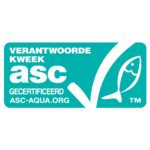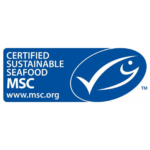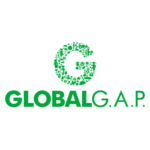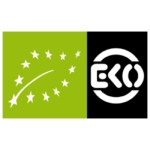Turbot
Europe, inland waters
Recirculation system (aquaculture)
- Jan
- Feb
- Mar
- Apr
- May
- Jun
- Jul
- Aug
- Sep
- Oct
- Nov
- Dec
Flatfish belong to the order Pleuronectoformes. There are more than 500 species of flatfish. Flatfish live on and partly in the seabed, only the halibut swims higher up in the water column. Flatfish have an oblong, flat shape and their eyes on one side. The upper-side, the eye-side, of the flatfish has a camouflage colour and the underside is white. It may seem like flatfish swim on their belly, however, in fact, they are laying on their side. Flatfish larvae have a regular fish shape, with eyes on each side and a vertical swimming mode. After 6 weeks, one of the eyes migrates upwards, over the head to the other side. From now own, the flatfish swims with their eyes up and their blind side facing the seabed.
The best known flatfish species in the Netherlands are sole and plaice. Other flatfish species that occur in the North Sea are the common dab, halibut, turbot, brill, European flounder and lemon sole. Flatfish are caught with beam trawls, pulse trawls or demersal otter trawls.
Turbot is a large diamond-shaped flatfish that occurs from Norway to Morocco and in the Mediterranean and Black Seas. Turbot belongs to the larger flatfish species: this fish can grow to a length of 100 cm and weigh 25 kg. Their eyes, similar to brill and megrim, are on the dark green colored left side of the body. On that side they have no scales, but they do have bony nodules. The difference with brill is clear, because brill has a smooth skin with scales.
Europe, inland waters
Recirculation system (aquaculture)
Atlantic Ocean, north-east (FAO 27)
Electric pulse fishing, Gillnets
Atlantic Ocean, north-east (FAO 27)
Beam trawl

Fish with the ASC label is farmed in a sustainable manner.

Fish with the MSC label is caught sustainably.
This fish is not being overfished or is being responsibly farmed, with minimal impact on the environment.
This fish is a second choice. There are still some improvements to be made in this fishery or fish farm.
Do not buy this fish. It's being overfished or the way it's farmed or caught has a negative impact on the environment.

There is fish available of this species that is farmed or caught using high welfare standards.

GlobalG.A.P. certified farms are doing a step in the right direction in terms of sustainability. A few species with this label are getting a better score on the VISwijzer.

Organic standards are the strictest when it comes to fish feed. They also require certain measures for animal well-being.